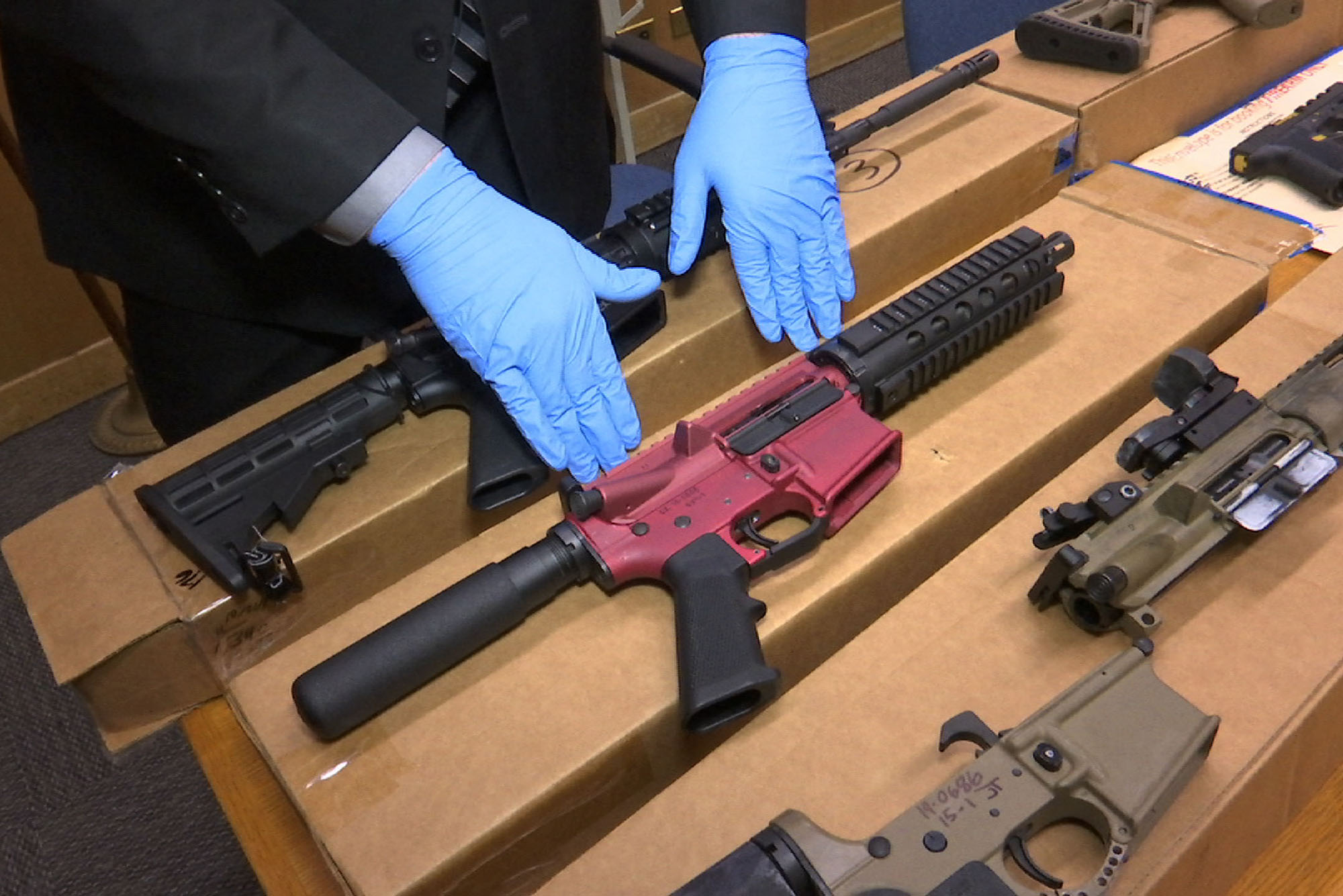SCOTUS Upholds Biden-Era Ghost Gun Regulations

The Supreme Court has upheld restrictions on ghost guns, which can be assembled at home and had been almost impossible for law enforcement to trace. Photo via AP/Haven Daley
SCOTUS Upholds Biden-Era Ghost Gun Regulations in a “Qualified” Decision
BU School of Law Second Amendment and gun law expert applauds ruling, but says it leaves open possibilities for future challenges
Last week’s Supreme Court decision to uphold the Biden-era regulation of homemade ghost guns is “a win for public safety for sure,” says a Boston University School of Law expert.
Cody Jacobs, a LAW lecturer and an expert in Second Amendment and gun law, applauded the decision, while telling BU Today that the court narrowed its scope, allowing the possibility of future challenges from gun rights groups.

Criminal use of ghost guns—assembled from components that didn’t have serial numbers and were virtually untraceable by law enforcement—surged by a factor of 10 in the six years before 2022, according to the Bureau of Alcohol, Tobacco, and Firearms (ATF). That year, the ATF stiffened regulations, ordering serial numbers on parts, background checks of aspiring buyers, and licensing of vendors and makers of components kits. Gun advocates sued the government, saying ghost gun kits don’t fit the federal definition of firearms and that crime rates notwithstanding, most buyers aren’t criminals.
By a 7-2 vote, on March 26 the court upheld the regulations, with Associate Justices Clarence Thomas and Samuel Alito dissenting. “The ATF’s rule is not facially inconsistent” with the definitions of the 1968 federal Gun Control Act, Associate Justice Neil Gorsuch’s majority opinion said. “The statute’s text, context, and structure make clear it reaches some weapon parts kits and unfinished frames or receivers.”
BU Today asked Jacobs to assess the court’s decision and its likely in-the-streets effect on public safety.
Q&A
With Cody Jacobs
BU Today: Did the court’s ruling surprise you?
Jacobs: Yes. For one, we should always be surprised when this very conservative court upholds any gun control law or regulation, whether we are dealing with a Second Amendment issue or not. The six Republican justices are often quite results-oriented, and you’d generally rather be on the pro-gun side in front of the court. That said, I found the outcome in this case particularly surprising because the court seemed quite skeptical of the rule at oral argument.
BU Today: What do you think of the majority’s reasoning?
Jacobs: It’s a narrow opinion that I would characterize as giving a cautious “yellow light” to the ATF’s rule. They essentially held that because the plaintiffs were making a “facial” challenge to the regulation, they needed to show it wasn’t consistent with the plain text of the statute in any application. Following from that, the court held that there clearly were applications where this would be consistent with the statute, because many of these kits are basically almost complete firearms.
Their reasoning makes sense to me, though I think it proves more than they held—the court explains that in common usage, an “artifact noun” like “firearm” often refers to both the thing itself and the unfinished thing. The majority vividly uses the example of an unassembled table from IKEA, which we would still call a table. This reasoning seems to support the ATF’s rule in almost every application, not just the almost-complete firearm kits, which Justice [Sonia] Sotomayor’s concurrence seemed to allude to.
BU Today: Does the ruling in any way point to how the court is thinking about gun control going forward?
Jacobs: I don’t know. It’s important for people to realize that this wasn’t a Second Amendment case—rather, it was an administrative law case about whether the rule was consistent with the statute. That said, I think it is pretty interesting that the court upheld this after, just last term, striking down the ban on bump stocks, which was based on the ATF’s reading of the phrase “machine gun.” The court took a much narrower view of the relationship between the term in that case and the possibility of conversion than it did in this one, as Justice Thomas’ dissent points out explicitly. Whether this signals a more deferential approach to ATF regulations—or gun control more broadly—remains to be seen, but I wouldn’t count on it.
BU Today: Are there any implications in the ruling, beyond gun regulations, of the majority’s test for the appropriateness of government regulation or lack thereof? Or is this decision an outlier?
Jacobs: I’m not an administrative law scholar, so please take my answer on this one with a grain of salt. I thought it showed unusual deference to an administrative agency for this court. For example, they noted that while courts should “independently” review agency regulations under Loper Bright Enterprises vs. Raimondo, “the contemporary and consistent views of a coordinate branch of government can provide evidence of [a] law’s meaning.” [Last year’s Loper Bright decision overturned the principle of courts’ deferring to agencies’ interpretation of ambiguous regulations.] This seems like deference with another name—perhaps with the added requirement that the views expressed be “consistent” over some period of time.
BU Today: What will be the ruling’s effect on public safety day to day?
Jacobs: It’s a win for public safety for sure. These conversion kits provide an ability to get around background checks, which are an important tool for keeping guns out of the hands of criminals. They also evade rules requiring serial numbers on guns. That said, the win is a qualified one, because the court left the door open to further challenges to the agency’s rule that are based on application to specific conversion kits.

Comments & Discussion
Boston University moderates comments to facilitate an informed, substantive, civil conversation. Abusive, profane, self-promotional, misleading, incoherent or off-topic comments will be rejected. Moderators are staffed during regular business hours (EST) and can only accept comments written in English. Statistics or facts must include a citation or a link to the citation.